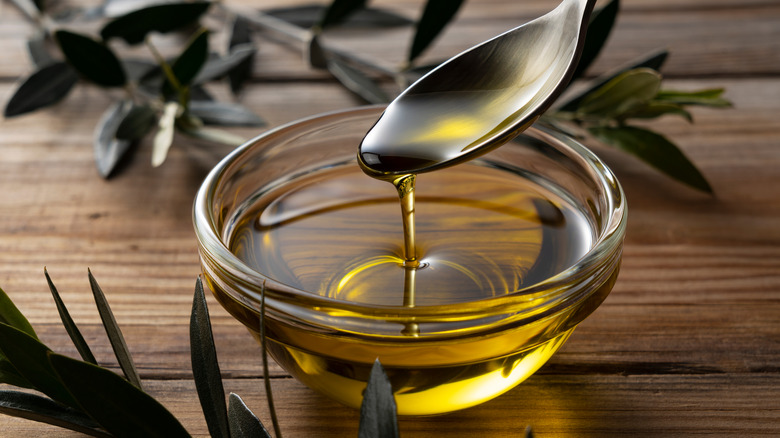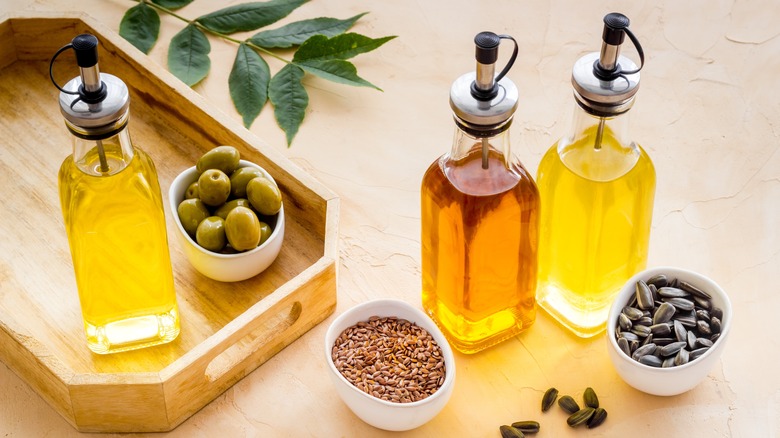Is It Okay To Cook With Finishing Oils?
Let's say you've run out of your usual cooking oil, but you have managed to find a stash of walnut oil sitting in the back of one of your kitchen's cupboards. Can you cook your meal with it?
Walnut oil and other finishing oils like hazelnut and truffle oil can make recipes like pestos and salad dressings sing. Such finishing oils can also add nuance and flavorful depth to seafood and meat dishes with a simple drizzle. Pistachio oil and toasted sesame oil can brighten main dishes, amplify the sweetness of desserts, and for good reason have earned spots as staple ingredients in French pantries.
Yet as tempting as it might be to splash that fancy oil into your pan so you can get to cooking, you may want to hold off before opening that bottle of specialty oil and pouring it into a hot skillet.
Use with discretion
Since these precious olive oils are of higher quality and heating them can potentially burn some of the particles they contain, neutralizing the taste of the oil, such oils are meant to be served as pure as possible. Wolfgang Puck, for example, reserves his most expensive olive oils for side salads and appetizers. Finishing oils are similar; they are pricier oils meant to finish dishes with swirls of flavor topping bowls of soup or adding an extra oomph on top of a served bowl of ice cream.
The idea is to use finishing oils sparingly, and while these more nuanced oils can be used in low-temperature baking recipes to enhance the flavor of baked goods, they are best served as is: uncooked and unheated. For all your sautéing and grilling needs, you're much better off heading out to the market to pick up a bottle of standard olive oil to cook tonight's supper, instead of using the walnut oil kept in your kitchen.

